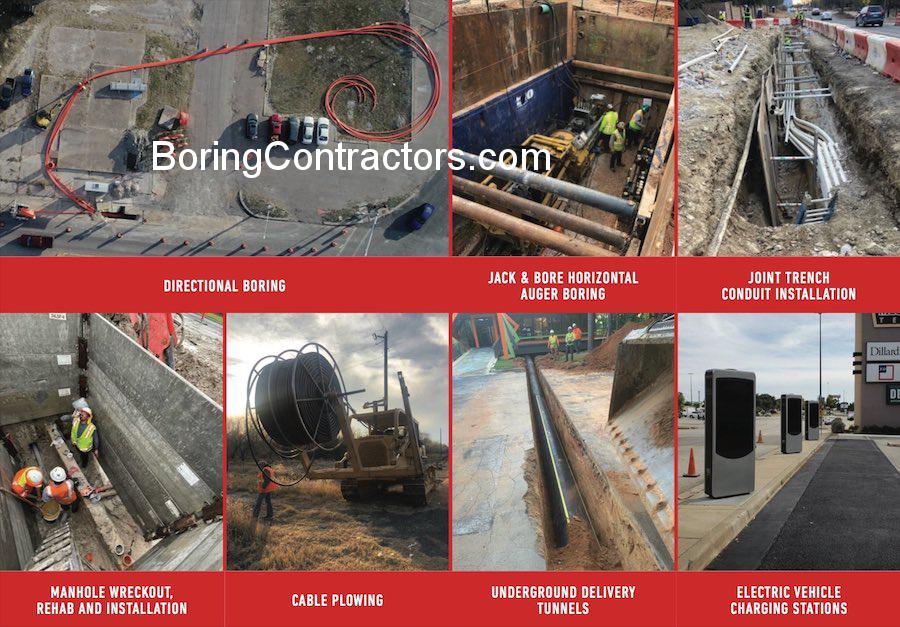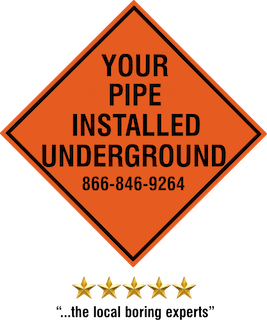Boring Conduit
Conduit Boring
Conduit boring, also known as horizontal directional drilling (HDD), is a trenchless method used to install underground pipes, conduits, and cables without the need for traditional open trenching. This technique involves drilling a pilot hole along a predetermined path underground and then enlarging it to accommodate the desired conduit size.
Who and How Conduit Boring is Performed
Conduit boring is typically performed by specialized drilling companies equipped with HDD rigs. These rigs utilize advanced drilling technology, including steering systems and drill bits, to navigate through various soil and rock formations while minimizing surface disruption. Highly skilled operators control the direction and depth of the drill to ensure accurate placement of the conduit.
Where and When Conduit Boring is Required
Conduit boring is required in various scenarios where underground installation is necessary but traditional trenching methods are impractical or disruptive. It is commonly used in urban areas with dense infrastructure, environmentally sensitive areas, and locations with existing utilities to avoid interference or damage.
Top Three Use Cases for Boring Conduit
- Urban Infrastructure Development: Conduit boring is invaluable in urban environments where space is limited and surface disruption is undesirable. It facilitates the installation of utilities such as telecommunications cables, electrical conduits, and water pipes beneath roads, sidewalks, and buildings with minimal disturbance to traffic and surrounding structures.
- Utility Crossings: When utilities need to cross obstacles like rivers, highways, or railways, conduit boring offers a cost-effective and efficient solution. By drilling horizontally beneath these obstacles, it eliminates the need for costly and disruptive excavations, ensuring uninterrupted service and minimal environmental impact.
- Renewable Energy Projects: Conduit boring plays a crucial role in renewable energy infrastructure projects, such as the installation of underground power cables for wind farms and solar arrays. It enables the efficient routing of cables over long distances, avoiding obstacles and sensitive habitats, while minimizing visual impact on the landscape.
Conduit boring continues to revolutionize underground construction by providing a versatile and environmentally friendly alternative to traditional trenching methods. Its applications span various industries, offering solutions to complex installation challenges while preserving the integrity of the surrounding environment.


